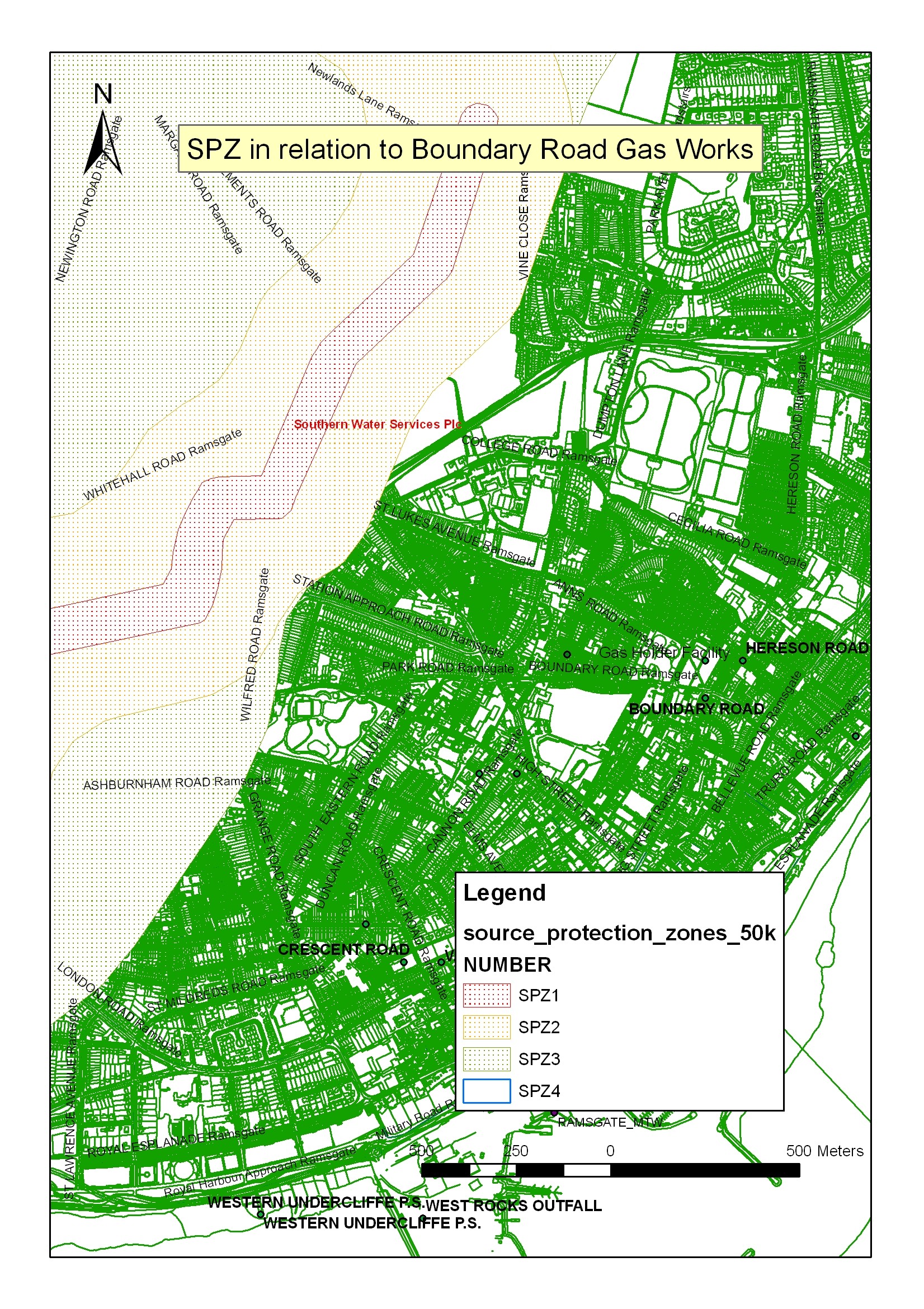Title 1 | home
Title 1 | 30.4.2010 pictures | maps | documents | Site Pictures 29th April 2010 | Site pictures 10th May 2010 | Ramsgate Gasworks pictures 20th July 2010 | list of the chemicals identified as being on the site | Ground water and the gasworks
Ground water and the gasworks
Regarding your further question about an error in distances from 'chalk groundwater potable water supply abstraction points located 1300m from the site' I should stress that I was being conservative in my calculation of the distance (it's rare to be pulled up for being too cautious these days, but there you go!). As discussed, there is an SPZII/III near to an adit located 1300m from the site which leads directly to a public abstraction, therefore I have used this as a measure of groundwater protection distances in my response
In brief, the controlled waters risk assessment indicates that the chalk groundwater has the possibility to be impacted by contaminants in the made ground and perched groundwater (e.g. coal tars, etc...). However, the chalk groundwater potable water supply abstraction points located 1300m from the site are not considered to have the potential to be adversely impacted by contaminants associated with the main sources of contamination on site (pls see attached map highlighting Environment Agency Source Protection Zones in relation to the Boundary Rd Gas Holder Facility). The Quantitative HHRA indicates that the USEPA Model (Tier 2 Assessment) has identified concentrations of Polyaromatic Hydrocarbons in groundwater beneath the site exceeding contemporary Screening Levels. However, it maintains that due to the depth of groundwater (~16mbgl) it is unlikely that there is a significant health [risk] via groundwater volatilization to indoor air which could impact Off-site Residents. As previously stated, should the site be redeveloped, then extensive remediation would be required to restore the site to standards required to support a vulnerable end use. To answer your question though, given that the general public does not have access to this site, there is not anticipated to be any current significant risk of harm to human health via available exposure pathways.
